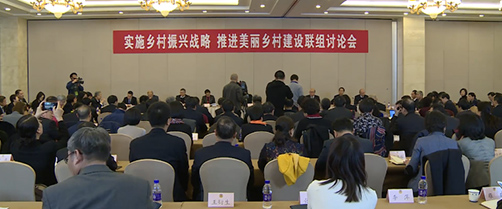Last night in a live talk show of dialogue between government officials and citizens, Li Xianzhong, director of the Beijing Municipal Commission of Transport, told the public that this year the municipal government is aiming to improve the city's transportation by encouraging the use of smart technologies and upgrading infrastructure.
In terms of rail transit, Beijing has 22 train tracks in operation with a total length of 636.8 kilometers and annual transit volume of 3.85 billion passengers. According to Li, in the next few years, while promoting the construction of the second and third phases of the urban rail network, Beijing will speed up the development of an integrated rail transit network, one that connects the urban metro system with suburban railways, intercity railways, and high-speed railways.
With the optimization and upgrading of the mobile wireless network, taking public transportation is becoming more convenient. In order to provide better mobile payment experience, the government will address three major problems in 2019: the QR code payment systems of different public transportation modes, such as metro, BRT, and buses, will be integrated; the Beijing Transportation Smart Card (Yikatong) will no longer require a deposit; and the self-service ticket vending machine in metro stations will accept mobile payment. Public transportation will become a mobile app away for all passengers.
Since Jan. 1, an electronic toll system for roadside parking has been implemented in Dongcheng, Xicheng, and Tongzhou districts. Li said that after a half month, the system has lived up to the expectation, as parking has become more orderly, the turnover rate of parking lots has greatly improved, and previous instances of roadside bargaining and unreasonable parking fees have virtually disappeared.
Li also responded to questions with regard to parking in the residential area, a hot topic in public discussions. He said that residential parking management is under the guidance and supervision of the local government. Districts, townships and subdistrict offices hold the right to issue certified resident parking permits, designate conditions for application and required supporting materials, and set parking prices for residents and non-residents.
More specifically, Li gave an explanation regarding parking fee payment prior to the certification of a resident status. For any vehicle pulled up in a solid-white-line parking lot, the uncertified driver who has submitted application for resident status should pay a non-resident price. Once the certification comes through, the previously paid non-resident surcharges can be applied toward future resident parking fees.
In 2018, Beijing also aims to optimize the public services and upgrade infrastructure in the Huilongguan-Tiantongyuan area, including traffic congestions that have caused much grievance to citizens. In this regard, Li introduced the traffic improvement plan for this area.
The first move is to build an arterial road network. Beiqing Road and Anli Road will be upgraded into urban expressways, while five east-west roads (Dingsi Road, Huinan North Road, Taipingzhuang North Street, Taipingzhuang Middle Street, and Zhongdong Road) and five north-south roads (Wenhua Road, Lincui Road, East Side Road of Building Materials City, Beiyuan Road North Extension, and Beiyuan East Road) will be built.
At the same time, Beijing will promote the construction of Rail Transit Line 17, which is estimated to start operation in 2021, in an attempt to improve the transportation capacity between the central business district in downtown Beijing and the Huilongguan-Tiantongyuan area. Another project is to split the existing Line 13 between Xierqi Station and Huilongguan Station to form two lines: 13A and 13B. Line 13A starts at Chegongzhuang Station of Line 6, and ends at Tiantongyuan East Station of Line 17 (under construction), while 13B starts at Dongzhimen Station of the current Line 13, and ends at Malianwa Station of Line 16.




